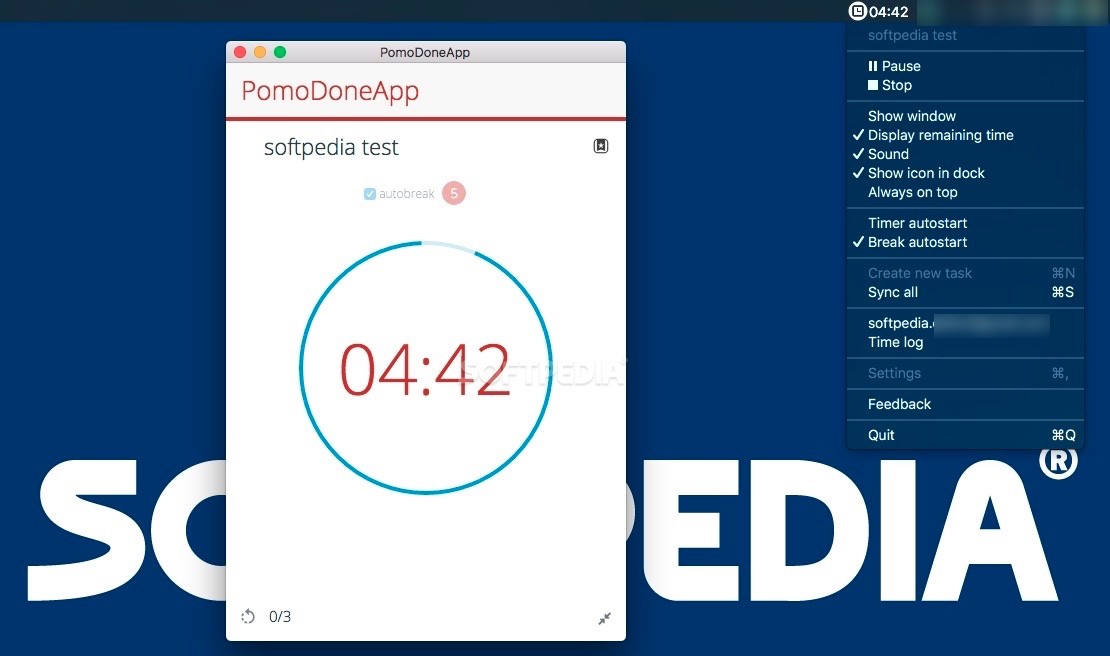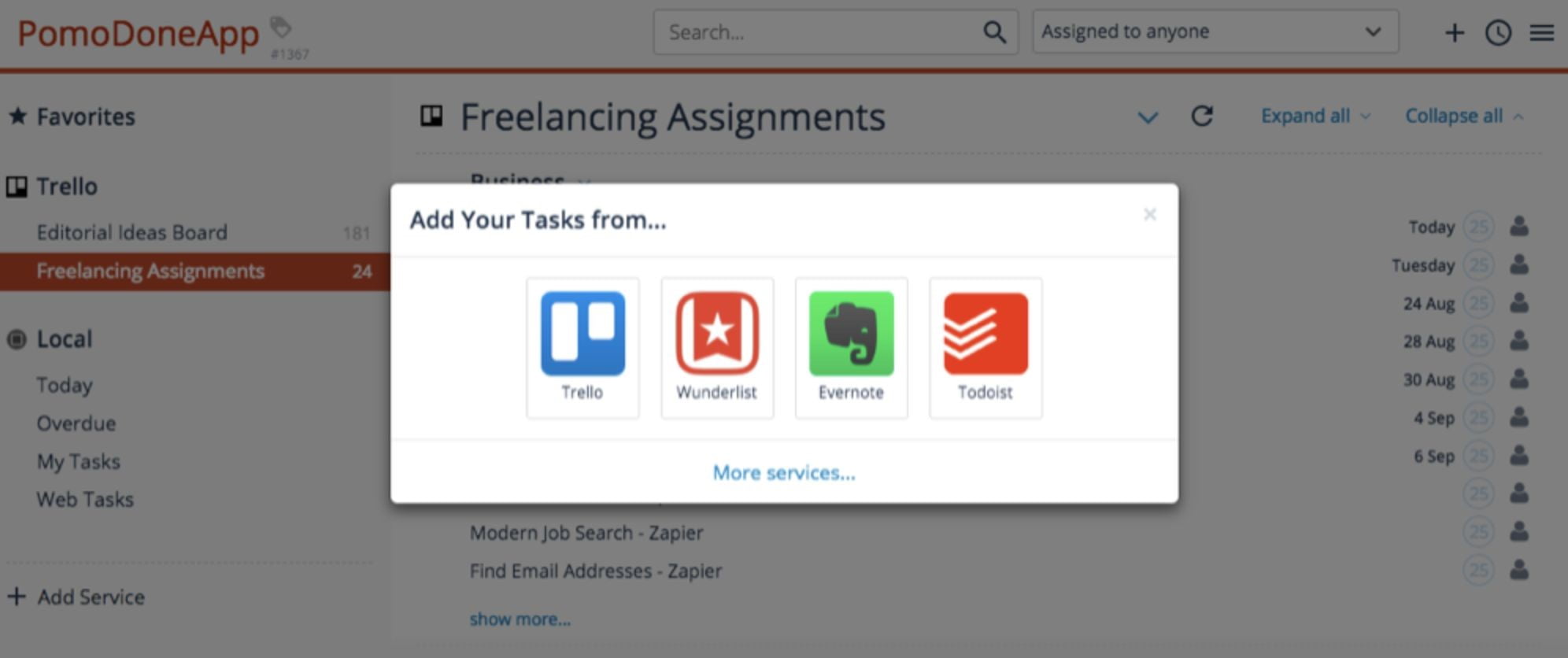

Wireshark needs to be run with sufficient privileges that allow for capture. Kali Linux is a Debian-based distribution designed and customized for digital forensics and penetration testing which includes Wireshark by default in its toolkit of applications and scripts available, configured and pre-built by default. There’s a command-line version ( tshark), as well as GUI versions (available with either GTK2 or Qt front-end).
#Pomodoneapp mac install
One should also make sure to install the other necessary tools alongside Wireshark, like dumpcap (in case they don’t ship by default). Wireshark is usually readily available in the repositories of most Linux distributions and installed via their corresponding package manager.įor example, in Debian-based Linux distributions (such as Ubuntu): sudo apt-get install wireshark Wireless Traffic Capture and Packet Analysis.Capture and Analyze Facebook Traffic and IP addresses.In such cases, forced decode is performed (right-click on packet for the purpose), manually selecting the dissectors to be used. However, it does not always make the right choices when selecting dissectors, particularly in cases where the protocol uses non-standard configuration (e.g., non-default ports, usually configured so by systems administrators for security purposes). Each supported protocol must have a dissector built into it and Wireshark uses several dissectors at the same time in interpreting each packet, determining which dissector to use by following programmed logic and making well-educated guesses. A dissector is basically a translator between the flowing raw data across the wire and Wireshark itself. Wireshark also comes with protocol dissectors for a very wide range of protocols.

Here, it is important for one to have at least some basic understanding of the OSI ( Open Systems Interconnection) model of the layers involved in networking communications and translations (from physical to datalink, network and transport layers involved).

It can also import and export files from other similar capture programs and capture traffic from a range of different network media types (Ethernet, WiFi, Bluetooth, and even VoIP and GSM). It can filter and search for packets on many various criteria, colorize packet display based on filters and create various kinds of statistics from the data captured. Wireshark captures live streaming packet data from a network interfaces on the fly, supporting a very wide range of protocols (e.g., HTTP, XMPP, SIP, BitTorrent, Bitcoin, most everything over TCP and UDP, etc.) and displays them with very detailed protocol information. Wireshark supports a wide range of protocols (both heuristic and non-heuristic). It is used by network and systems administrators to troubleshoot issues (e.g., determining who or what is using available bandwidth), by security engineers to analyze security problems (e.g., identifying possible attacks or malicious activities), QA engineers use it to verify network applications (e.g., finding unsecured or bloated applications), developers to debug protocol implementations and also more generally people use it to learn network protocol internals. It reveals what goes on under the hood on the packet level, where even the nicest looking applications can reveal their horrible implementations and seemingly trustworthy protocols could prove malicious.


 0 kommentar(er)
0 kommentar(er)
